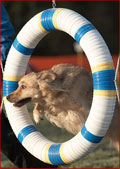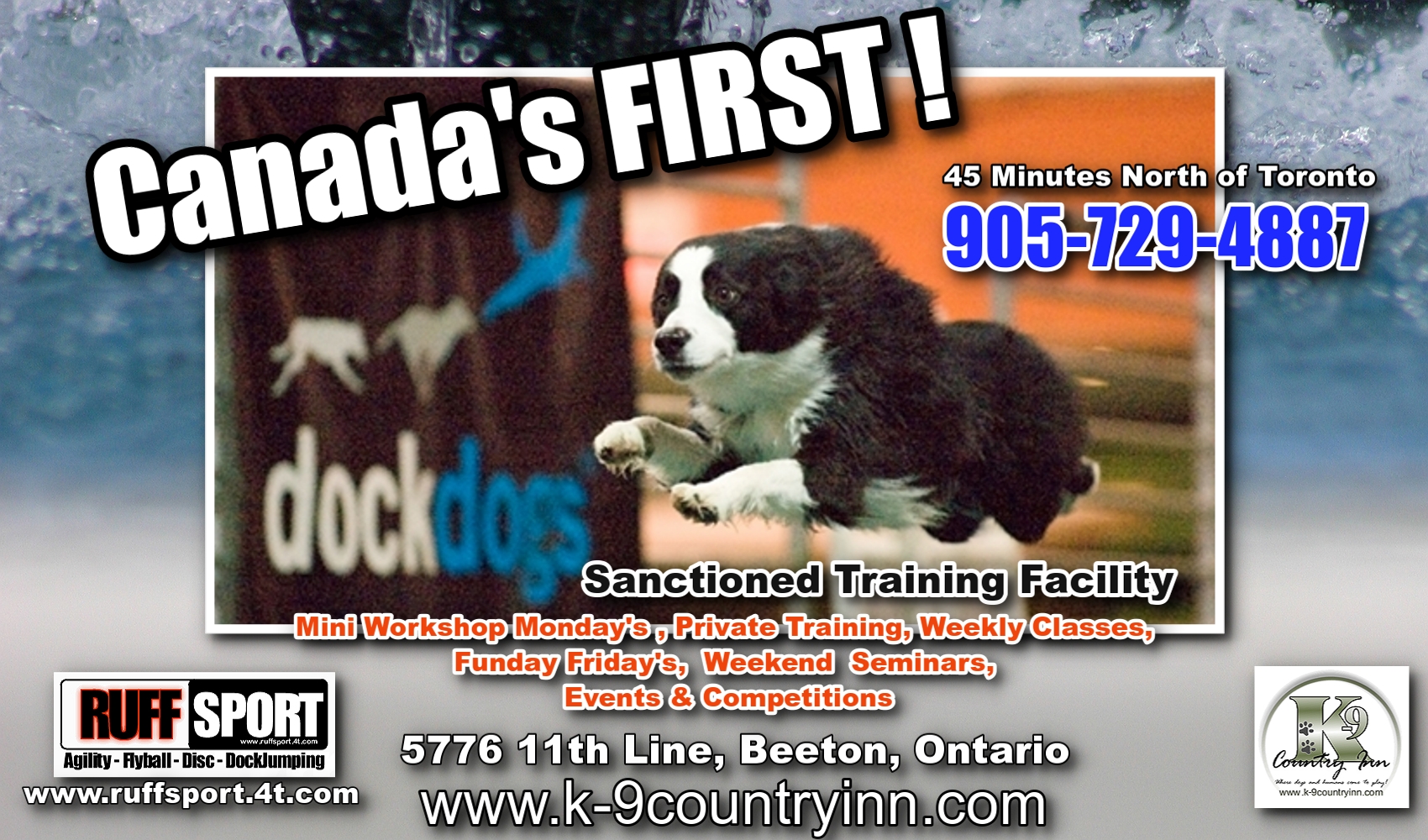Training For Faster Flyball Turns
Improving a dog's turn can have a dramatic effect on it's overall time. Remember, on the recall, they only have 15 feet between the box and the first jump.
Foundation Exercises and Channeling
Susan Garret of McCann vs McCann recommends that a good place to start is with a puppy. Whenever you throw a toy to be retrieved be sure you throw it into a corner so the pup must turn tightly to come back to you (the walls prevent a wide arching turn). Also never throw a toy without running away from the puppy -- to encourage the drive back and develop a strong chase instinct.
With adult dogs we set out broad jump board on their sides to form a V around the box so the dog must turn tight--but not so tight that it cause the dog to "back" out of the box to avoid the board. We do alot of one jump and the boxwork or simply the box alone and run away. This constantly patterns a nice tight turn and chase. If the dog tends to ram their face at the box you may want to put up a pylon or other soft barrier about 4-6 feet in front of the box to encourage a sweep by one side of the obstacle to the box and out the other side (cone technique ). I also do alot of tug on a toy as soon as the dog comes back with the ball -- have the dog fly into the box and then fly back out to grab a favorite tug toy. The secret to a fast tight box is to have a very high, motivated dog going in so they will want to come out even faster. I would say the best boxes I have ever seen in flyball are by BC Sassy on Rocket Relay, BC Cat on Instant Replay, Am Staff Speedy on Rude Dogs and BC L.A. on our team (McCanns).
If you want to set goals with box work start timing the dogs when their nose breaks the plane of the jump before the box and stop the time when they break the plane of the jump coming back. A really good dog can do this (jump to box to jump) in about 1.65 seconds, a great dog can do it in 1.50 seconds and an unconscious dog like Sassy can do it in 1.35 seconds
Cone Technique
Sue Ethier of Rude Dogs has an interesting technique she learned from Marti McCann. A dog that comes straight at the box and hits it hard will turn slower than a dog who hits the box on the turn and banks off it much like a race car or bobsled. To encourage the dog to bank off the box, place a construction style cone about 6-8 feet in front of the box, depending on the dog. This idea is to have the dog approach the box already going into a turn; sometimes the cone needs to be moved according to the dog's approach. We just play around with it a bit until we find a spot that seems to help.
On Lead Technique
Russ Peterman recommends teaching them to get off the box as soon as they hit it. Rather than "pulling" them off the box, however, try using a short lead (about 6'). Get down to their level and as soon as they hit the box, pull them around in an arcing motion. Don't allow them to get the ball if they miss it. Just keep the momentum. Once instilled in their mind, they'll learn to scoop the ball as it comes out of the box, and come off the box more smoothly.
Conditioned Reinforcement
Mike Randall teaches the dog a conditioned reinforcement word (i.e. "ready"). As the dog hits the box, the box loader gives the conditioned reinforcement "ready" and then throws the ball in the opposite direction. Normally he does this without jumps. In competition, the box loader can give the dog a conditioned reinforcement.
Yell and Chase
The Rocket Relay uses the following technique. Have someone stand beside/behind the box loader. When the dog comes to the box, this person yells "GO!" and chases the dog back to the line. Denise Neuner of Smack Dab tried this with her Border Collie and reported that it worked great.
Offset Holes
Some people swear by multihole Flyball boxes where one or two of the holes is offset from center. The theory is that having the hole to the side encourages the dog to already be turned when taking the ball. It way also encourage a swimmer's turn by having a few more inches in which to get the back legs on the box. This is by no means universally accepted. Some people feel that the offset holes encourage a wide turn and others are concerned about the dogs getting their feet caught in the other holes.
From: FlyballDogs.com







 Post a Comment
Post a Comment
Reader Comments